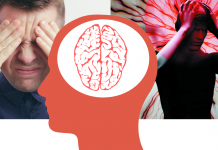
Iron is an essential mineral that plays a crucial role in the body’s ability to transport oxygen and maintain overall health. When the body lacks enough iron, it can lead to a condition known as iron deficiency, which can cause a range of symptoms that can impact daily life. Recognizing the signs of iron deficiency is important for maintaining good health and seeking the necessary treatment to prevent further complications.
Symptoms of iron deficiency can vary from person to person, but there are some common signs to look out for. In this article, we will explore the most common symptoms of iron deficiency and why it’s important to seek the necessary medical care.
One of the most common symptoms of iron deficiency is fatigue and weakness. When the body lacks sufficient iron, it can’t produce enough hemoglobin, which is the protein in red blood cells that carries oxygen to the body’s tissues. As a result, the body’s cells and tissues are deprived of oxygen, leading to feelings of tiredness and weakness. Individuals with iron deficiency may find themselves feeling exhausted even after getting enough rest, and may struggle with everyday tasks due to their lack of energy.
Another common symptom of iron deficiency is pale skin and a general pallor. Since iron deficiency can lead to a decreased production of red blood cells, it can result in a pale or sallow complexion. This is because hemoglobin gives blood its red color, so when its levels are low, the skin can take on a lighter appearance.
In addition to fatigue and pale skin, individuals with iron deficiency may also experience shortness of breath and dizziness. This is because the body’s tissues are not getting enough oxygen, leading to feelings of breathlessness and lightheadedness, especially during physical activity. This can significantly impact an individual’s ability to exercise and engage in everyday activities, which can have a negative impact on their overall quality of life.
Other common symptoms of iron deficiency include headaches, cold hands and feet, and chest pain. These symptoms can be the result of the body’s inability to transport enough oxygen to the brain, extremities, and heart, leading to various discomforts and health issues.
It’s important to note that iron deficiency can also lead to a condition called iron-deficiency anemia, which is a more severe form of iron deficiency. Anemia occurs when the body doesn’t have enough hemoglobin to carry oxygen to the body’s tissues, leading to a range of symptoms such as increased heart rate, irritability, brittle nails, and cravings for non-nutritive substances like ice or dirt. If left untreated, iron-deficiency anemia can lead to more serious health complications, so it’s important to recognize the signs of iron deficiency and seek medical help if necessary.
So, what can be done to address iron deficiency and its symptoms? The first step is to see a healthcare professional for a proper diagnosis. A simple blood test can determine if an individual’s iron levels are low, and from there, a treatment plan can be developed to address the deficiency.
Treatment for iron deficiency typically involves iron supplements, which can help raise iron levels in the body. In some cases, dietary changes may also be recommended to include more iron-rich foods such as lean meats, poultry, fish, beans, lentils, and leafy green vegetables. It’s important to note that vitamin C can also help the body absorb iron more effectively, so it’s beneficial to include sources of vitamin C in the diet to aid in iron absorption.
While iron supplements can help raise iron levels in the body, it’s important to follow the guidance of a healthcare professional when taking them as an excessive intake of iron can lead to toxicity. Furthermore, it’s important to address any underlying causes of iron deficiency, such as heavy menstrual bleeding, gastrointestinal conditions that affect iron absorption, or a diet lacking in iron-rich foods, to prevent future deficiencies from occurring.
In conclusion, iron deficiency is a common condition that can lead to a range of symptoms such as fatigue, weakness, pale skin, shortness of breath, and dizziness. If left untreated, it can progress to iron-deficiency anemia and lead to more serious health complications. Recognizing the signs of iron deficiency is crucial for seeking the necessary medical care and treatment to address the deficiency and its symptoms. By working with a healthcare professional to develop a treatment plan that includes iron supplements and dietary changes, individuals with iron deficiency can improve their overall health and quality of life.

















